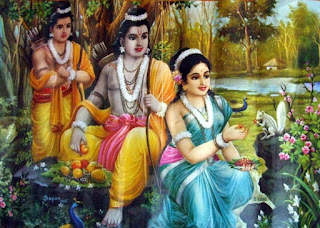This dialogue between Hanuman and Shree Ram is very meaningful and useful for all the spiritual aspirants.
After returning with Sanjeevani and the whole herb-mountain, Hanuman--very humbly--talked to his Lord, Shree Ram. "Lord! You didn't send me to bring Sanjeevani, but You sent me there to reveal two significant aspects which are essential on the path of spiritual service and practice!
Hanumanji himself is an incarnation of Lord Shiv; although he is an epitome of devotion and selfless service to Shree Ram, to guide the souls on the path of spiritual service, he reveals following important points.
Shree Ram asked, "Dear Hanuman, why are you saying so? What makes you feel so?"
Hanuman replied, "I came to know that Shree Bharat is a greater devotee than me! When I was returning with Sanjeevani, unknowingly he hit me with an arrow. I fell to the ground, getting badly injured. But Bharatji neither asked for Sanjeevani nor he called any doctor.
He has such great faith in You and the devotion for You that he prayed,"If by mind, words, and body my love for the Lotus-feet of Shree Ram is pure and innocent; if my Lord Raghunath is pleased with me, then may this monkey get free from all fatigue and pains!"
As he spoke these words, immediately I got up and returned back to the normal!!"
Lesson:
We chant the name of God but we do not have full faith in His Name. When difficulties arrive, we keep trusting external factors, ignoring the remembrance of God with faith and surrender to Him.
Hanuman continued... "Second point Lord, when the arrow hit me, I fell down but the hill stayed midair. This shows that actually the mountain was being carried by You only. I was only the instrument. I was unnecessarily thinking that it is ''I" who had been carrying it!!
Lesson:
We take pride in serving God, and forget that we are just an instrument. It is all HIS energy, inspiration, and grace that we can serve Him.




























